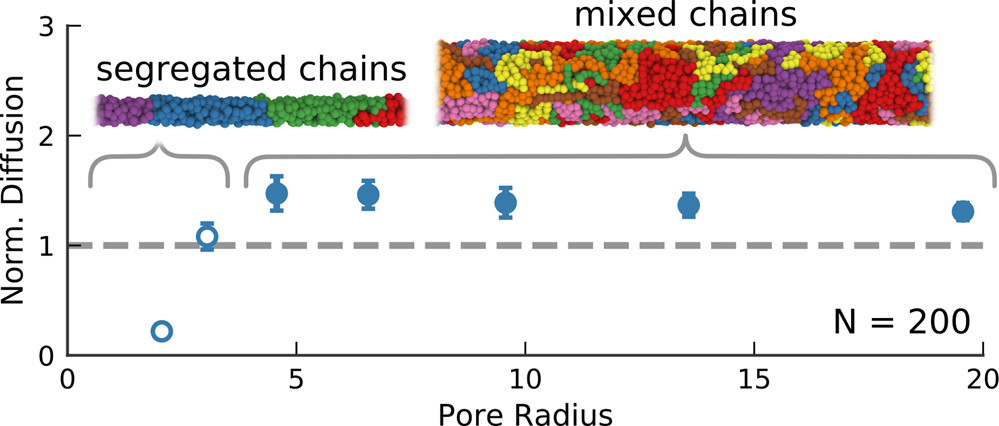Abstract
The behavior of polymer melts under cylindrical confinement was investigated using molecular dynamics simulations. A range of polymer chains, from unentangled to highly entangled, were confined in cylindrical pores with radii ranging from much smaller to much larger than the polymer size. These simulations were used to measure polymer chain conformation, entanglement density, and center-of-mass diffusion. The conformational anisotropy is well-described by a confined random walk model, although excluded volume effects cause slight differences in the radius of gyration. The number of entanglements per chain in confinement is accurately described using a simple volume fraction model consisting of a zero-entanglement region near the pore wall and a bulklike entanglement region in the pore center. The size of the depletion region near the wall is chain length dependent. Finally, the diffusion along the pore axis exhibits nonmonotonic behavior with the pore radius. As the pore radius decreases, the diffusion coefficient, \(D\), initially increases due to increasing chain disentanglement, though for small pores \(D\) eventually decreases as a result of confinement-induced chain segregation.
